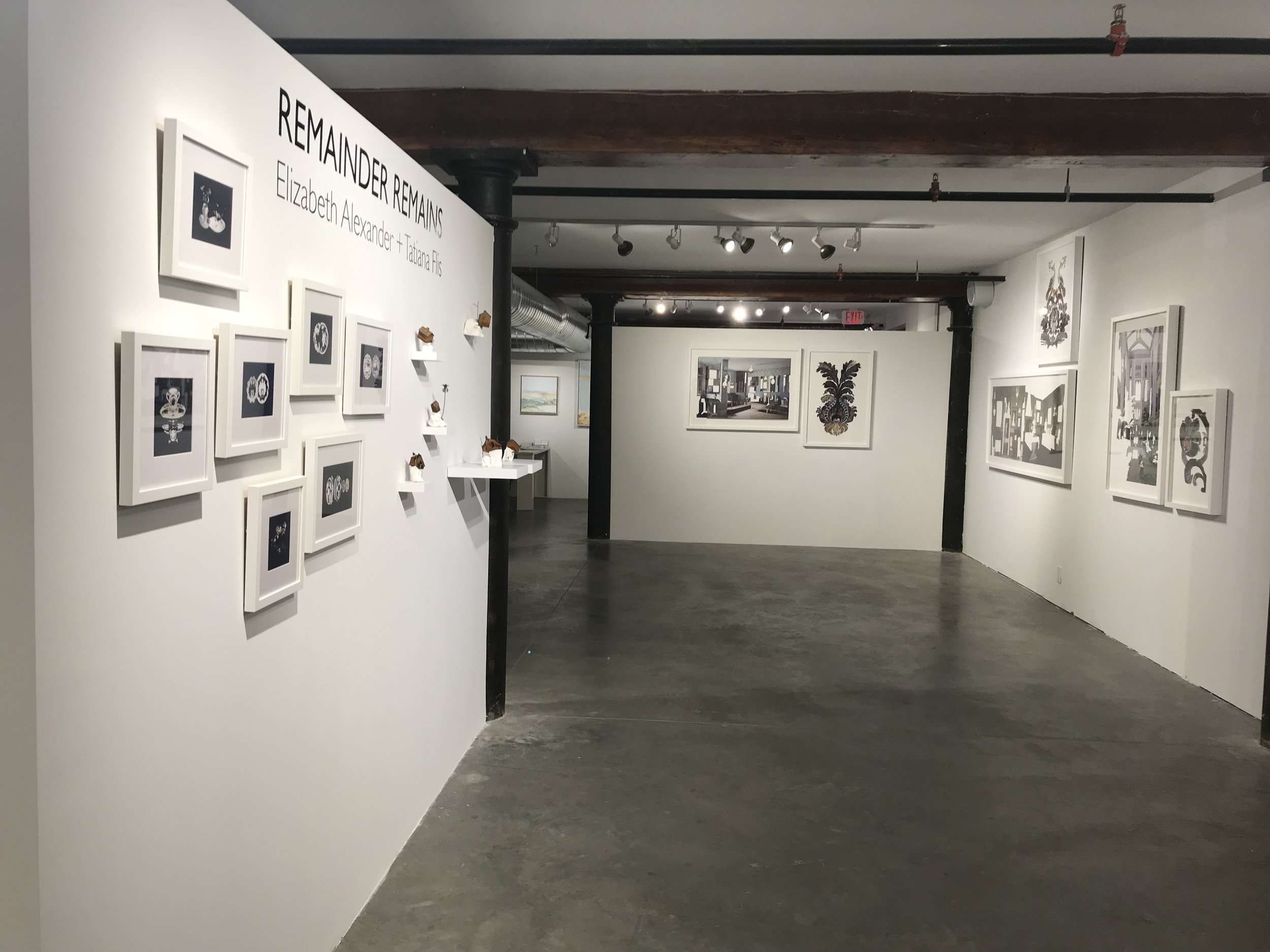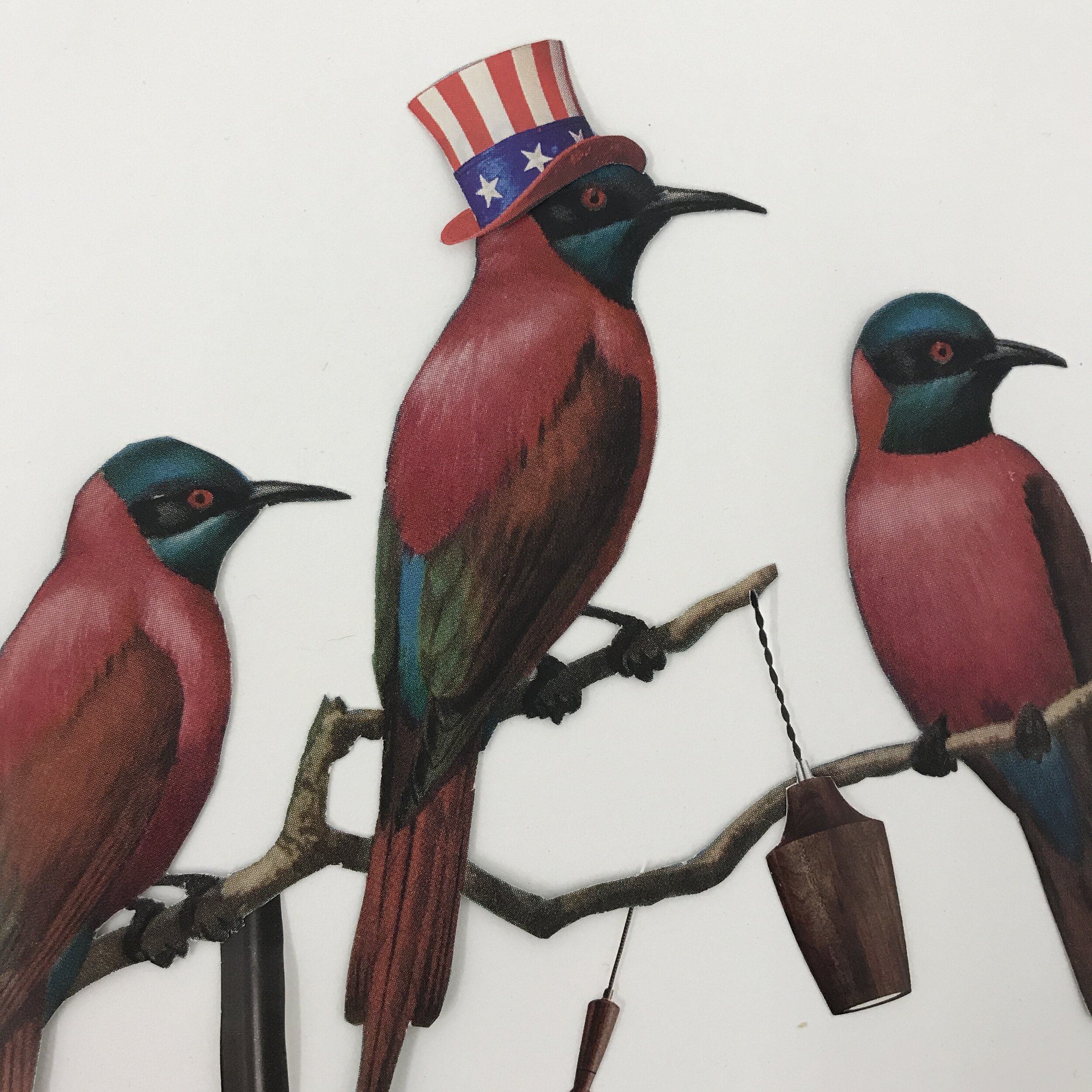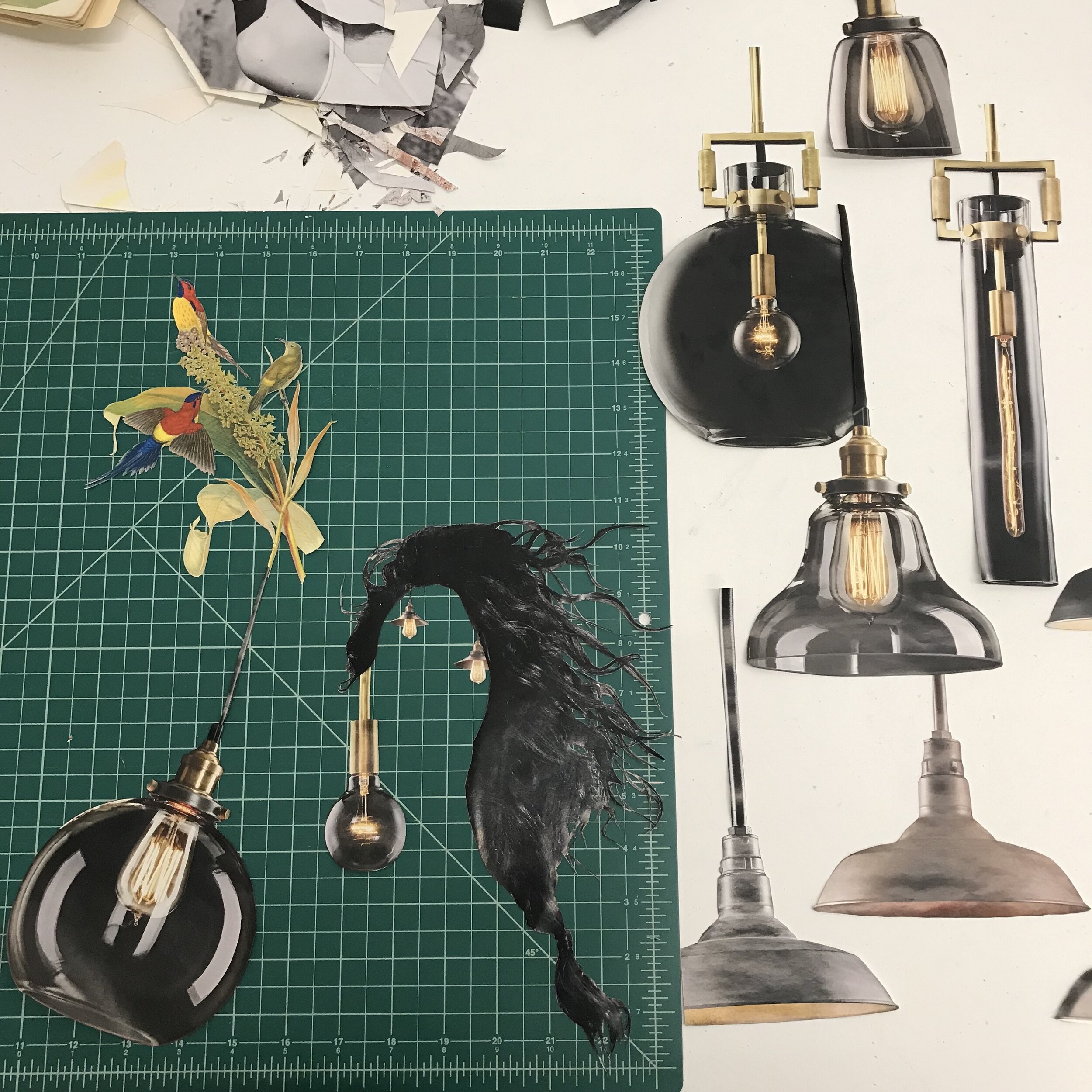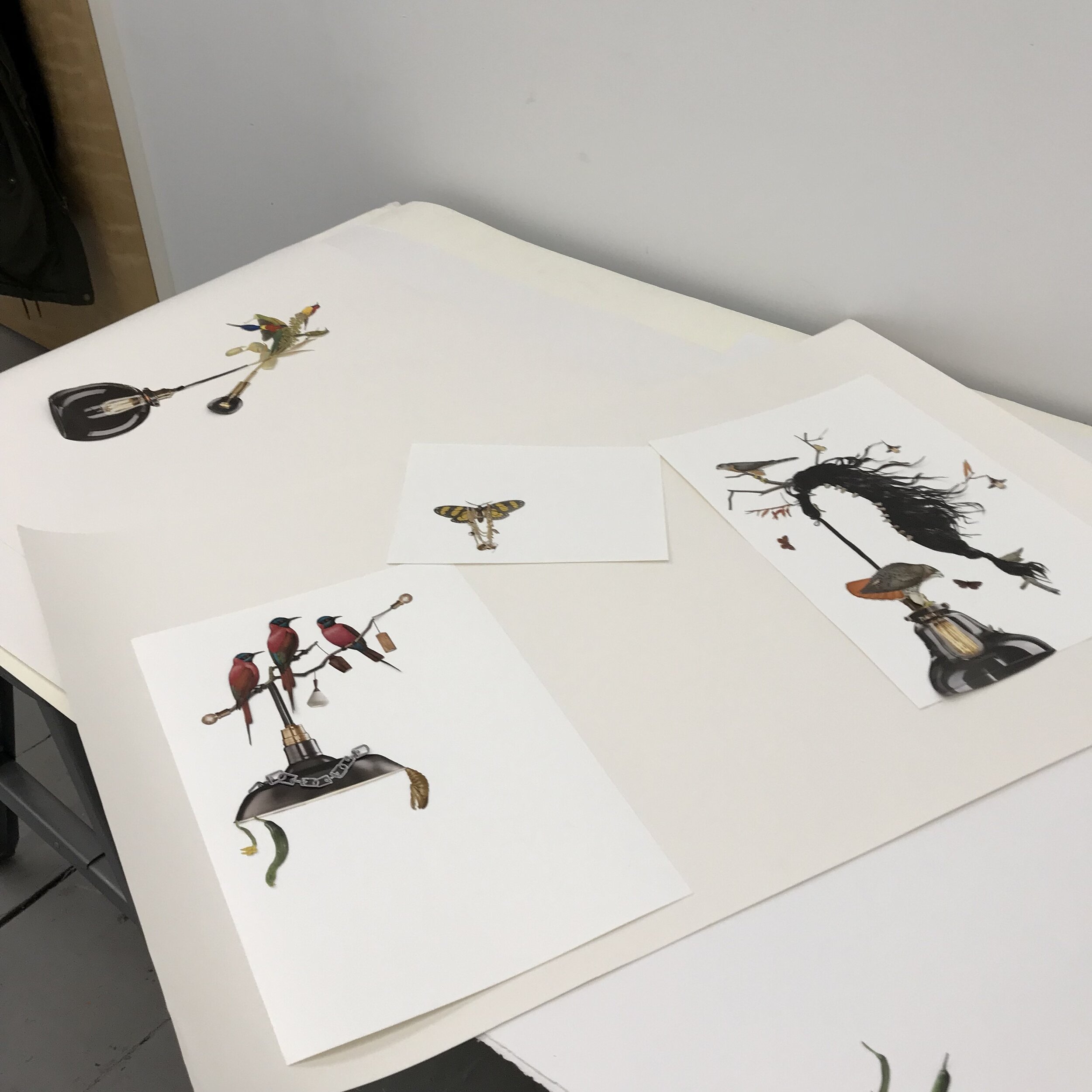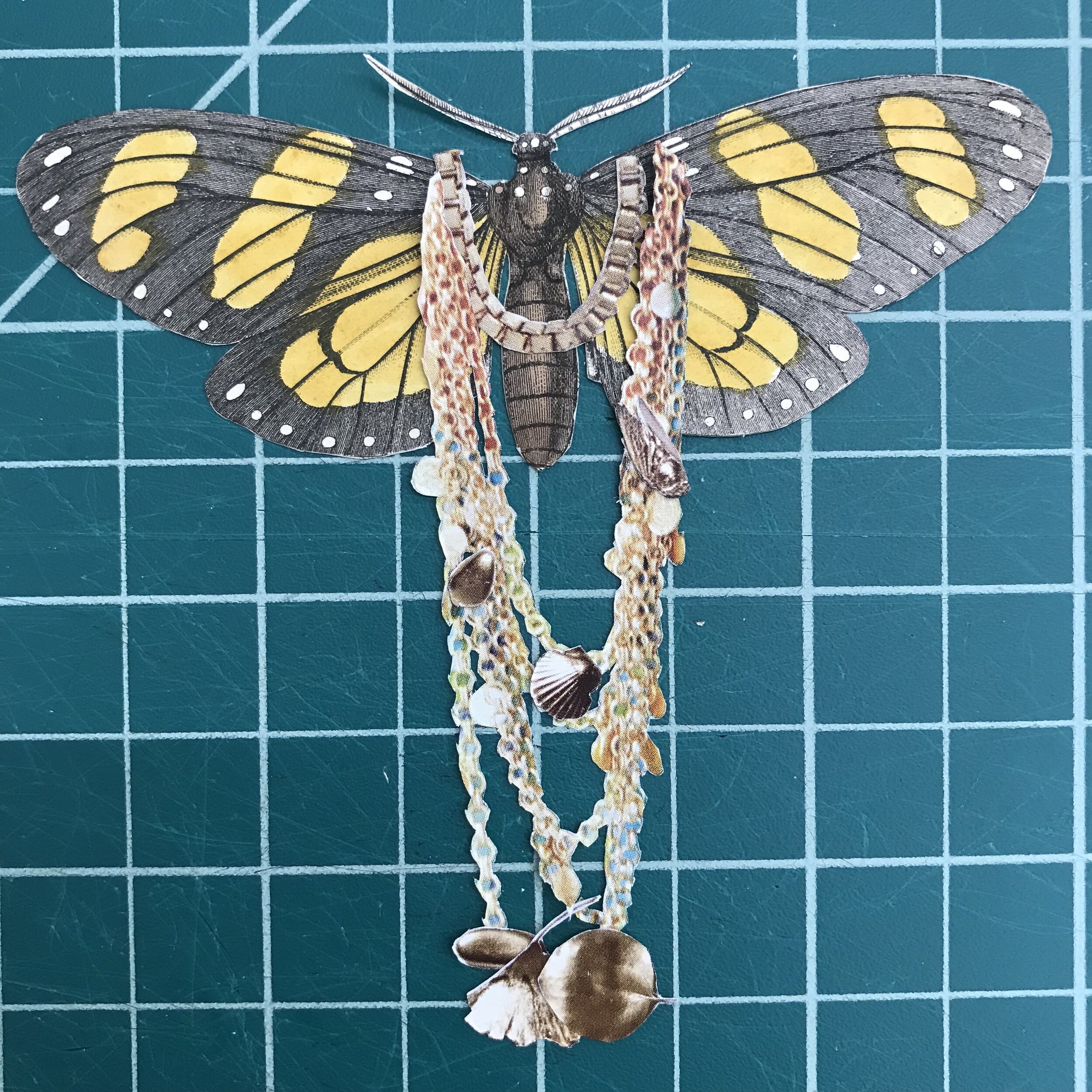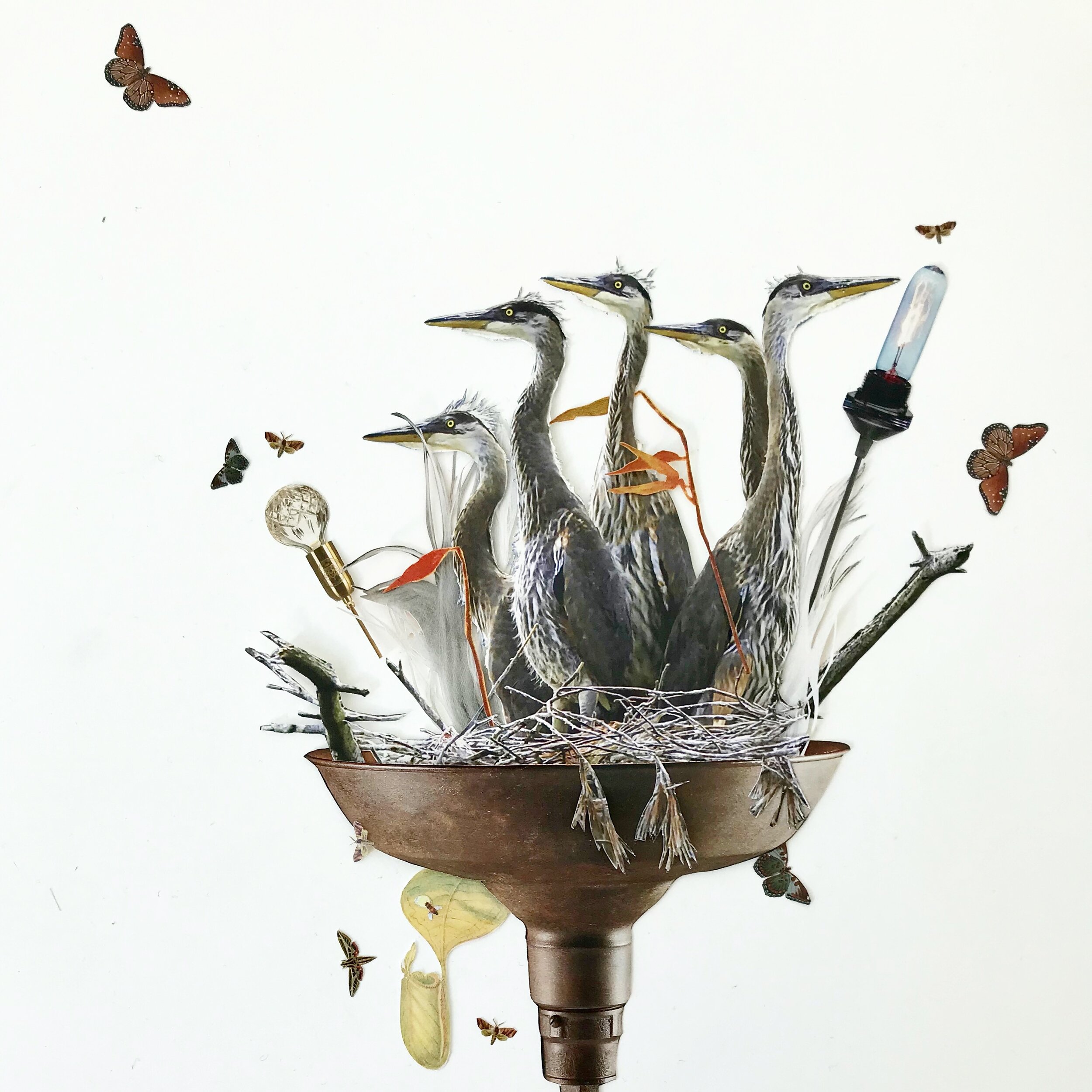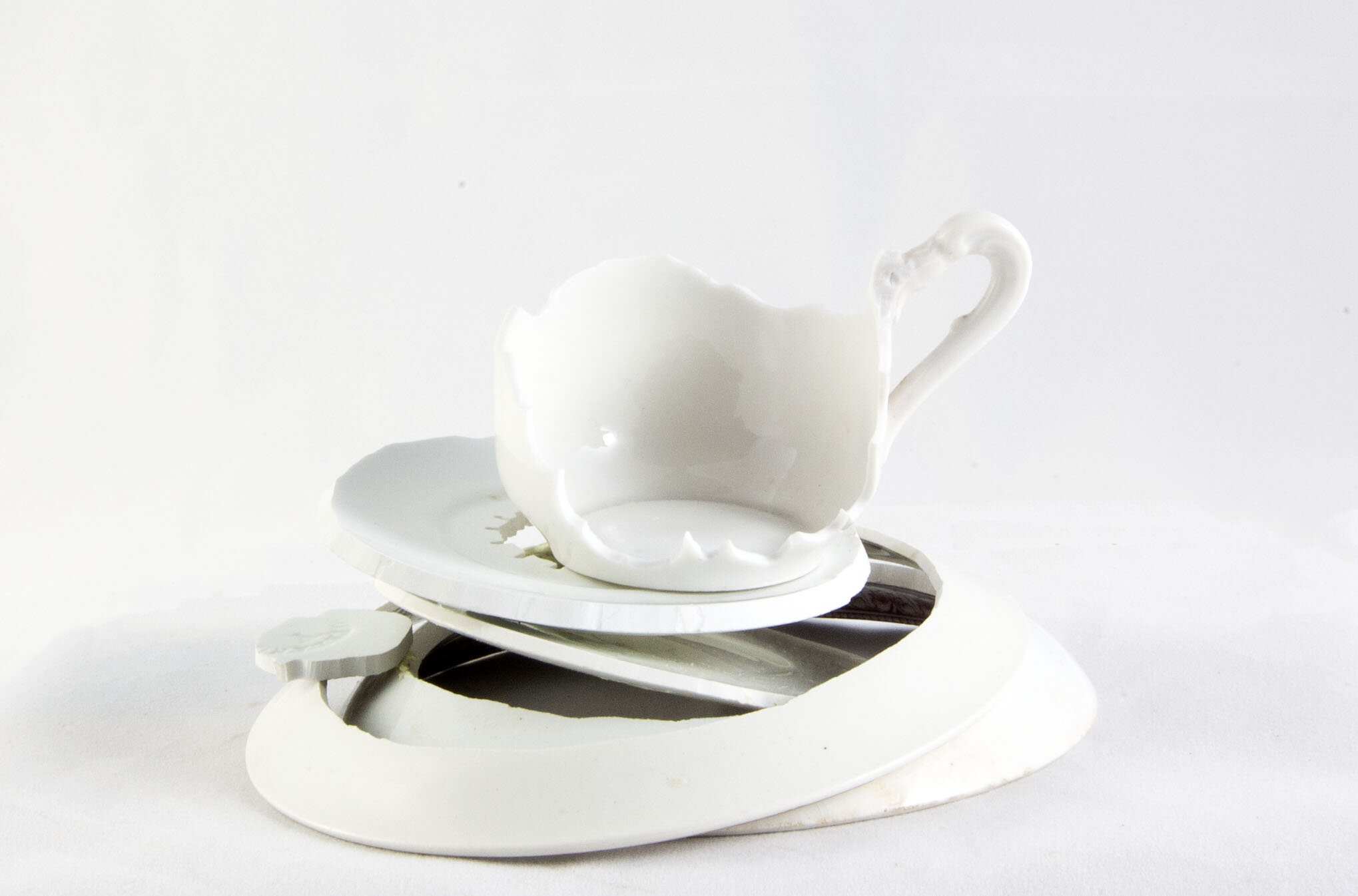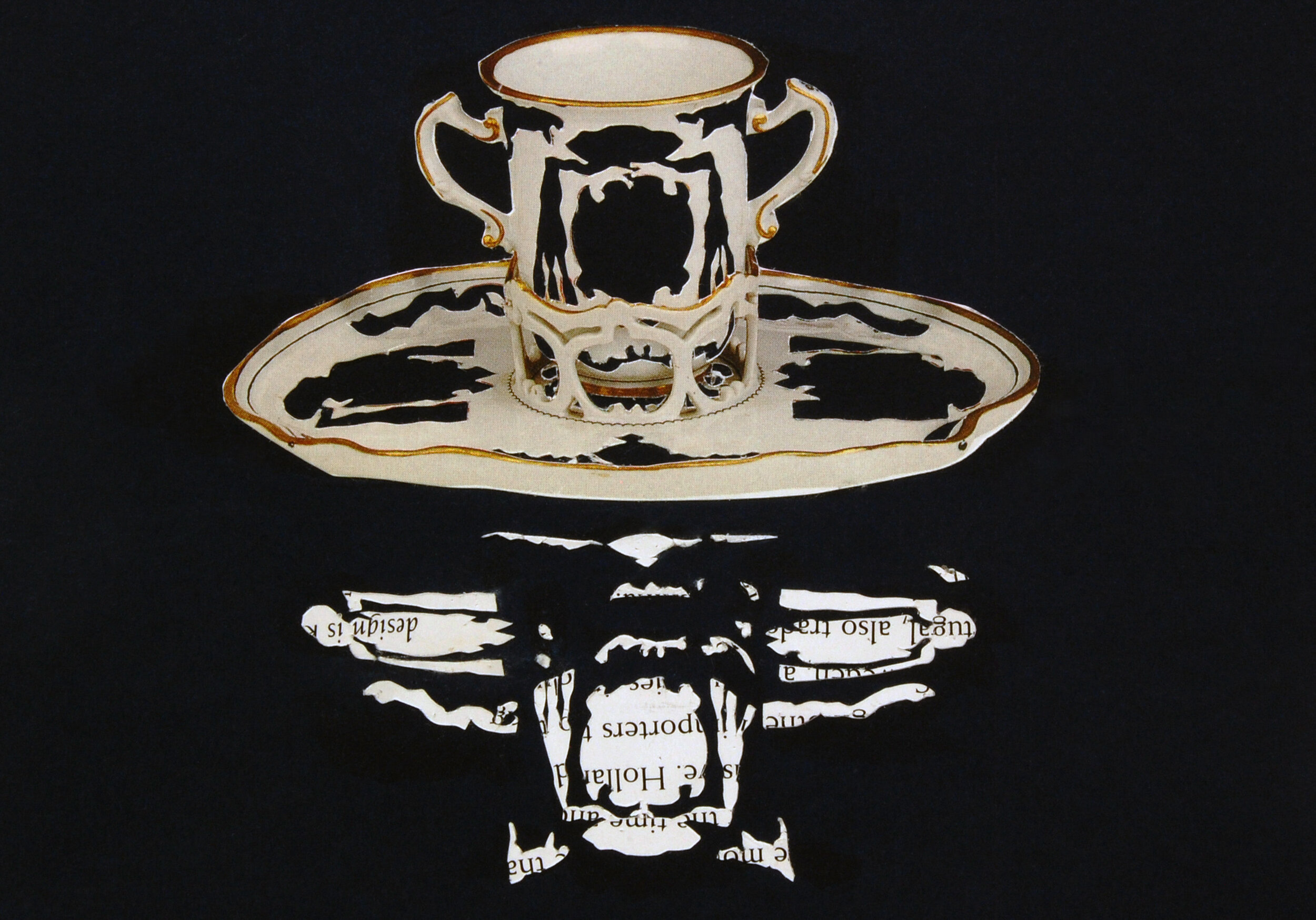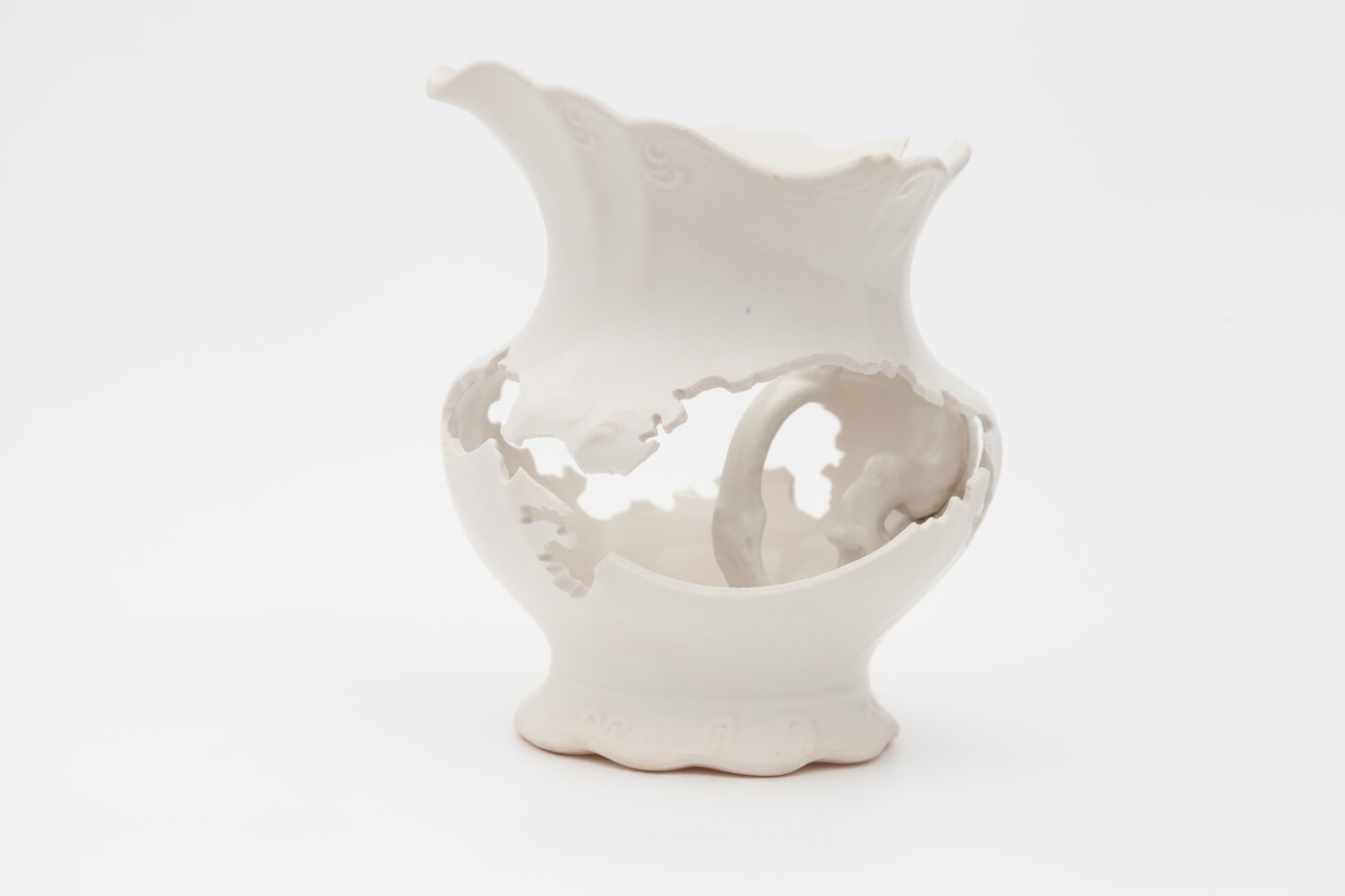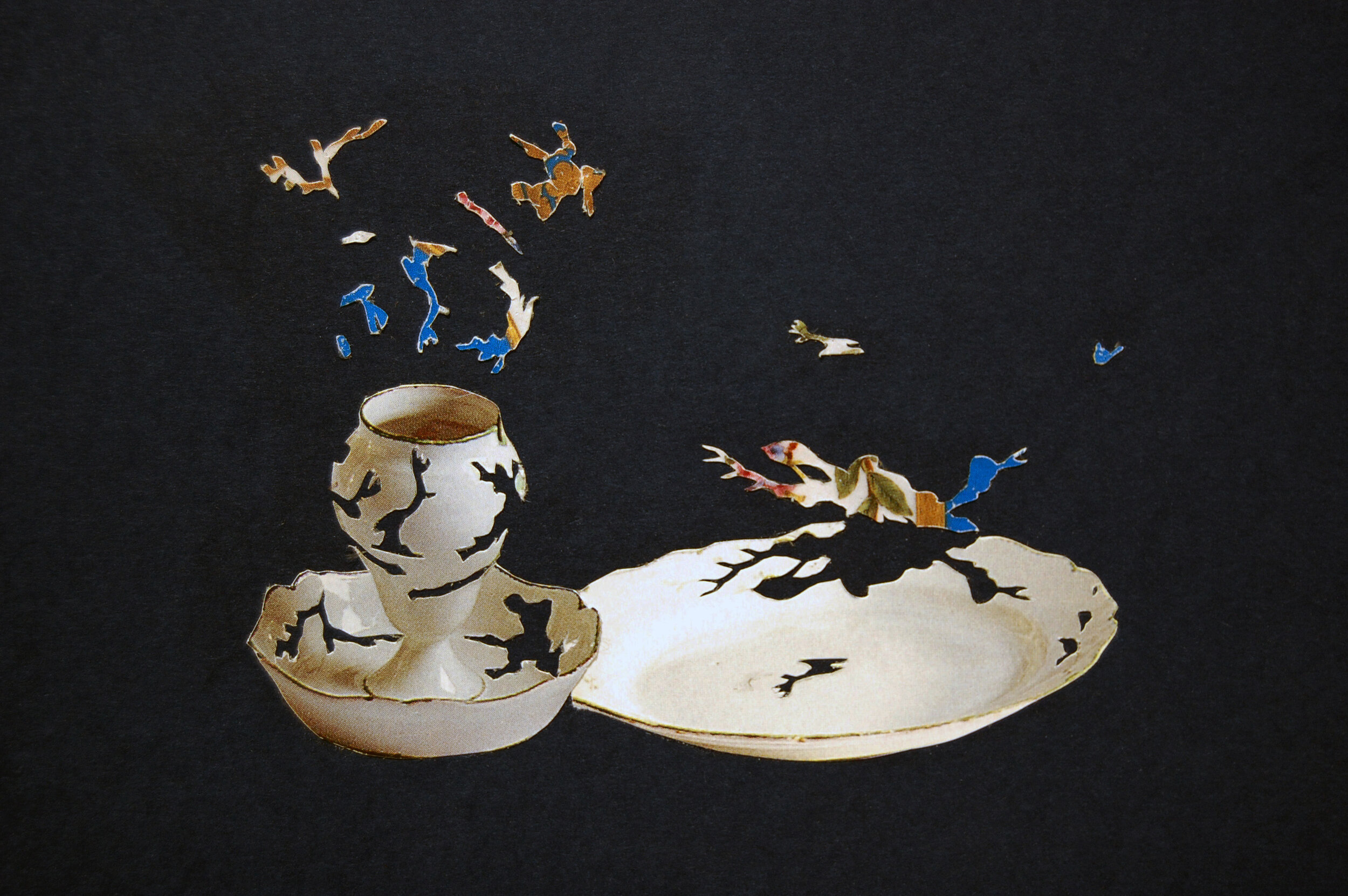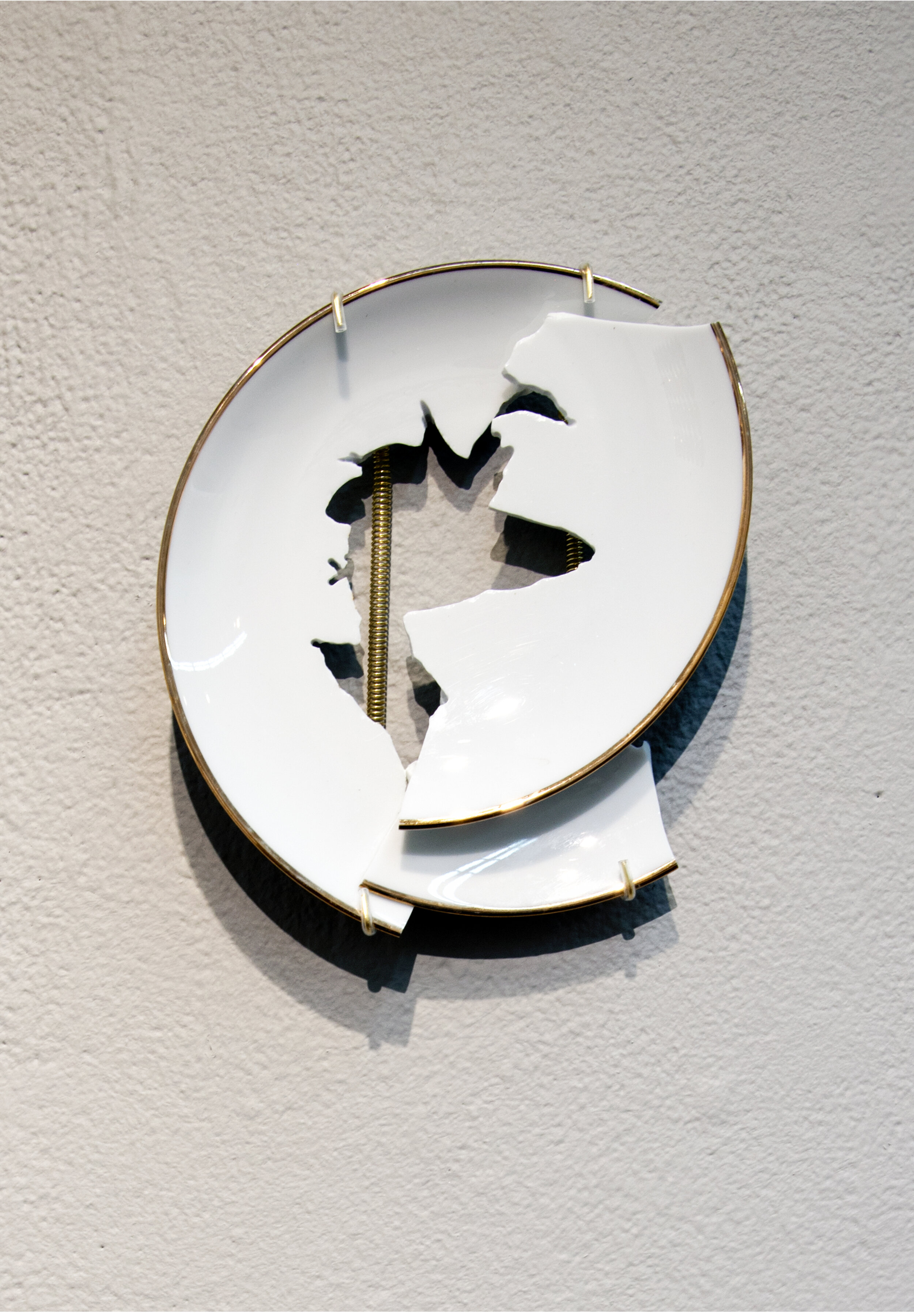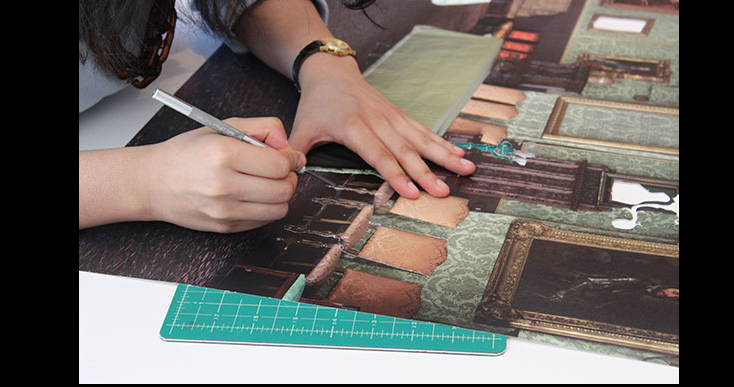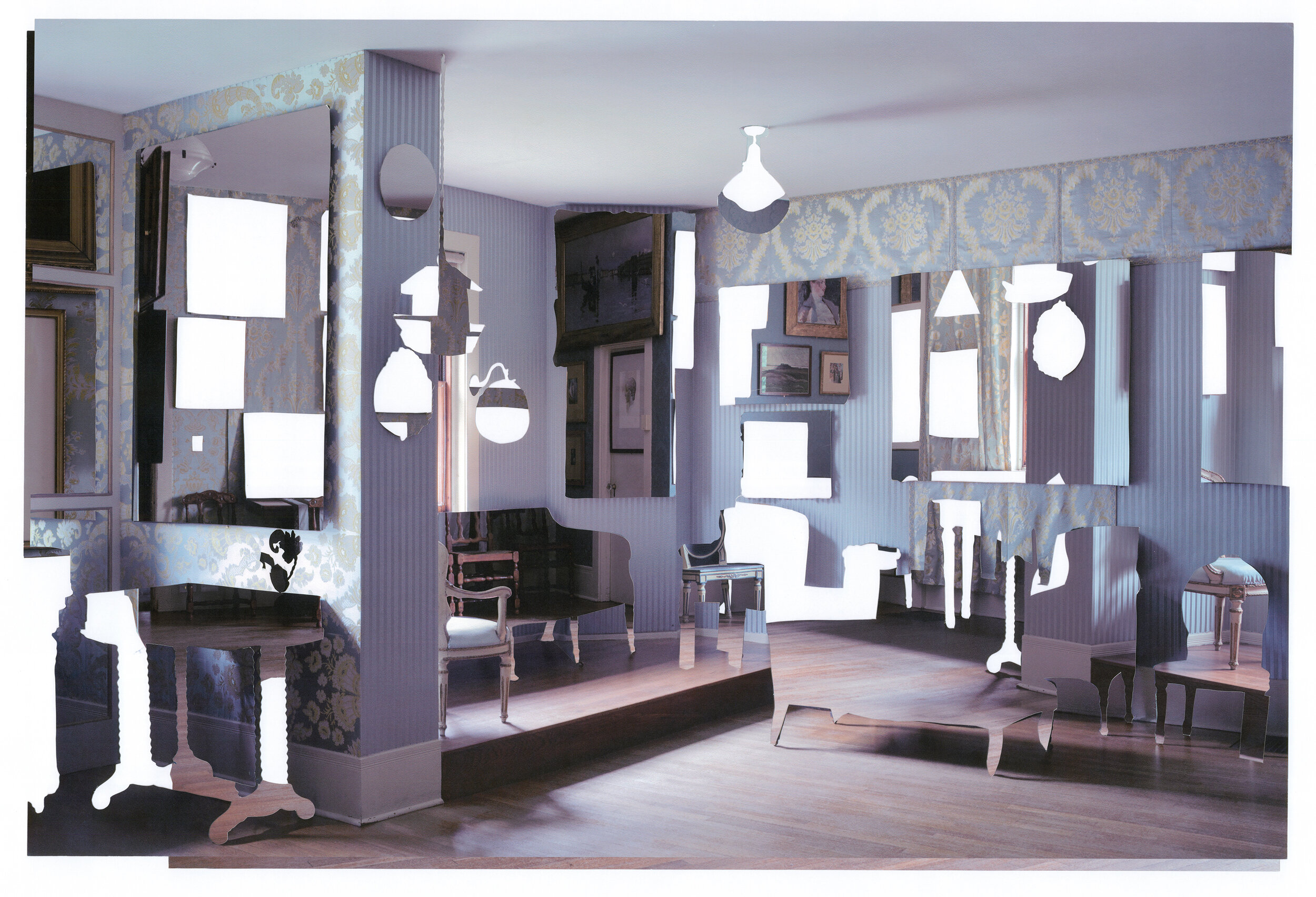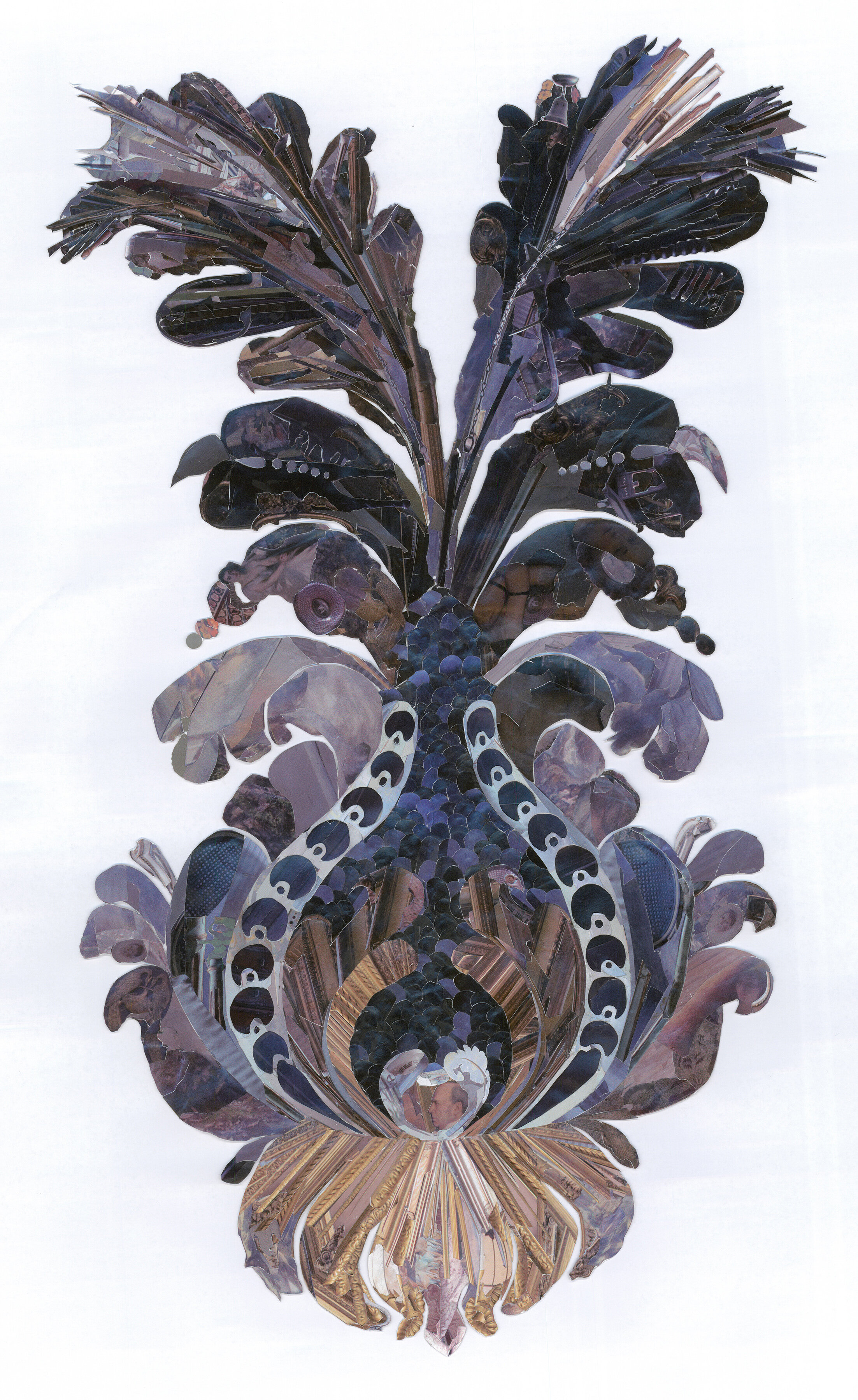Evoking Memory in "Remainder Remains"
In highlighting that which has been left behind, artists Elizabeth Alexander and Tatiana Flis take over the main gallery through September.
"Remainder Remains" evokes the memory of what has been taken, forgotten, lost, or stolen. Elizabeth and Tatiana met in 2007 in the Sculpture Department at Cranbrook Academy of Art. This shared connection and friendship is one of the many elements that brought these two artists together for this show.
In “Remainder Remains,” common threads between their works are exposed to the viewer through the specific use of found imagery and collage. They each unearth elements of human behavior and emotion that we culturally tend to ignore.
Below, the artists share insights behind the making of their work. The exhibit is now on view through Sunday, September 29th.
Elizabeth: Since our time together in graduate school I have always thought of you as a master of miniatures and detailed graphite drawing. Could you talk about the role collage has in your process?
Tatiana: I have always been interested and taken by miniatures and dioramas. As a child, the act of using my hands to create something new spoke to me. So, the act of collaging came naturally. It is the idea of the immediacy of the process that speaks to me. When collaging you have the ability to take another's voice, vision, and creation, and make it your own, make it new... use it as a vehicle for your personal self-expression. The comfort I get with a pair of scissors and a stack of magazines still transports me back to being a teen, creating collaged self-portraits on my bedroom floor. As I continue to grow and develop my studio practice, I seem to always gravitate towards collage between creative bursts, when I am trying to think through a process, or in some cases trying to not think at all. Since drawing is a huge part of my creative output, I invest a lot of time to putting pencil to paper but usually never in a sketchbook, so, in a way, collaging is my sketchbook. It is a simple yet completely complex and intimate process, and the possibilities are endless.
Tatiana: Can you tell me a little about your overall process? What excites you, and gets you into your studio?
Elizabeth: What drives me to get into the studio is simply the love of making and need for an emotional outlet. I am in my home studio just about every day and feel a little lost when there is a large chunk of time when I am not. I grew up frequenting my mom's studio and my dad's welding shop (at one time they were in the same building) and find these spaces comforting, it doesn't surprise me that I sought that out for myself. My process is a simple series of what ifs and responses to material and space. There isn't a concrete way that I approach an idea, so the way I begin varies based on my state of mind or the needs for a piece. Sometimes I work backwards considering an exhibition or a location and design something to fit that space, sometimes the work evolves as I hunt for materials. My series "Keeping Up Appearances" began with a cheap found chair I decided to cut up and eventually I was removing pattern from clothing, porcelainware, lamps, wallpaper and fabric to create a space the chair belonged in. After that I created several other installations under the same title with the goal to include domestic objects created only out of the wallpaper patterns I extracted.
Elizabeth Alexander
Keeping Up Appearances no.1
wallpaper, adhesive, moulding, found objects
11' x 15' x 8' Installation view Cranbrook Academy of Art
2008, photos by Lisa Walcott
Tatiana: I have always been intrigued overall by the conceptualization of your work. How do you decide to begin your projects?
Elizabeth: My work is highly influenced by my daily life and the materials I use, which are scavenged from surplus building suppliers, second hand stores, and antique stores. I challenge the American Dream through domestic imagery and explore the emotional effects of broken promises, abused power dynamics, and doubt that comes with antiquated value structures. Without an understanding of objects and architecture, materials and technique I could not reference a nostalgic image of home in order to communicate. I have built a studio practice retrofitting techniques I gained in art school to alter untraditional materials such as etching found porcelainware or cutting intricate patterns from wallpaper. The process of discovery is among the reasons I prefer to work with found objects and domestic materials. In order for the piece to function I need to consider the history, the color, the form, or the pattern choices of the designer, the traditional domestic application, and the amount of positive and negative space within a form or pattern. It becomes a collaboration between myself, the material, and the original designer that shapes the work through intuition and dialog. Repetitive labor, such as paper cutting or casting, has become a centering force for my practice. As a migraine sufferer I am frequently forced to come to terms with my physical limitations, which are often accompanied by aura and full body disruptions, that could be triggered by any number of things I encounter every day. Simple, easy to accomplish tasks are at the core of my process partly because I can work through moments of illness.
Elizabeth: What excites you, and gets you into your studio?
Tatiana: Studio practice is something we are taught, and are made to learn in art school. However, at its core, I believe all artists have the same response to this question: "If I can't get into my studio, I don't know what I would do."
For most creatives, it's what allows us to breath and really be our own selves. However, I'll be honest, I have my ups and downs (like most artists) when it comes to creative output, and I can go for weeks without stepping foot into my physical studio space. However, my brain never stops. I store things up and all of a sudden, I hit a point where I can't hold them in anymore. It is that moment where I feel like I'm about to burst that excites me the most. Once my hand hits my materials, there is a sense of release and calm that comes over my brain, and the only thing left is the physical act of creation - this is what gets me back into the studio. That exchange between concept and reality has always been the most enjoyable part for me.
Tatiana Flis
Everything is Waiting
plastic, rust, and mixed-media
3.5 x 2 x 2.5 inches, $350
2019
Tatiana: The Gardner Museum project is very different from your normal studio practice. Can you talk about how the project came to be, what did it look like to you then, and how have you come to the conclusion of the project all these years later?
Elizabeth: "Rearranging The Gardner" came about because I was asked to conduct a workshop or demonstration for the Polly Thayer Starr Artist Series at the Isabella Stewart Gardner Museum in 2015 during their famous nasturtium installation in the courtyard. I also learned that the infamous theft happened 25 years earlier around that same time. I grew up going to the Gardner with my mom and hearing stories from when my Uncle (her youngest brother) briefly worked there as a guard just before the theft happened. While I was at Mass Art I briefly worked as a gallery attendant there as well, but since I was an irresponsible 19-year-old and busy student I was only there a few months. I have always loved the Gardner Museum and attribute its grand and eccentric history as an early influence on my aesthetic, including its public display of loss highlighted by the wallpaper (wall covering) left framed after the paintings were removed.
For the workshop I asked my husband and collaborator, sound artist Todd Bowser, to assist me in using the workshop to make a piece about my love for the museum and this dramatic moment in its history. We invited visitors to remove items from printed images of select galleries (photos by Sean Dungan), and to read for a ‘sound collage’ about items in the museum’s collection. We set up a series of stations with cutting mats, photographs, and xacto knives with a sign on each table reading 'What would you steal?'. Some visitors came in and sat with the photos for a bit before choosing, others were more decisive, some asked for my assistance with the extraction. There were bags to collect all of the removed items corresponding with each image for me to do something with at a later date. The fifth station in the room was a place to record descriptions of the collection from the (get text citing from Todd) for the sound collage Todd made to accompany the images. For those that wanted a more playful activity I created a series of stencils modeled after the iconic wallpaper in the Dutch Gallery that visitors could trace onto the windows using glass markers to create a sense that the pattern was taking over the space, as I feel it has done in the rooms with missing items.
It took me several years to figure out what to do with the extracted items, I think I made them too precious and was afraid I would make a wrong choice. I always had it in the back of my head to recreate patterns from the wallpaper in the Dutch Gallery but some of the cutouts were so bulky that I struggled with the logistics of making that work. I finally gave myself permission to cut the damn things up and the collages are much better for it. Choosing to obliterate the extracted items for these collages make the material ghostlier with glimpses of familiar shapes and bits of recognizable moments rather than an eye spy of awkwardly arranged objects. I am much happier with the result than I think I would have been if I worked within my fear of messing them up. The result is 4 diptychs (3 will be in the show) containing the deconstructed photographs and collages of the stolen items with a soundtrack of readings and recordings of the spaces within museum created by Todd. This project is a love letter to an influential institution in my life and a tribute to the loss and vision that surrounds it. This project is different for me in the way I relinquished control over major elements in its making, but it is not an anomaly. For years I have been dipping my toe in the waters of collaboration and often hid it within safer venues where the audience is usually peers and family, I am slowly including participation, performance, and collaboration into my larger shows when I can.
Above: Elizabeth Alexander, "Rearranging The Gardner” Blue Gallery (left) and Damask (right)
hand cut inkjet print and glue, 2015-2019, $28,000 (only sold as a series, must include the short gallery diptych)
Elizabeth: I am intrigued with your use of narrative and personal history in your work. Do these items insert themselves or do you consciously choose to include them?
Tatiana: I've always been a "make it first, the meaning will come to you later" kind of artist. Certain images and objects become an obsession to me and the process of drawing or sculpting them are my way of understanding their significance.
I start with abstract forms. They have always seemed to make the appearance in my work before the identifiable imagery. These forms originated from wanting to represent myself without being representational. They were the stand-in for any given emotion I was going through at the time: grief, desire, jealousy, fear, etc. Over the years they have morphed into the abstract landscapes housing the body and objects, which now embody those emotions.
Specifically, over the past few years, the representation of home or a house has dominated my work. It started as a way to explore stories and evoke personal memories or stories from the viewer. We each can relate to the form of a house, positive or negative. We all have different meanings we attach to the idea of home. It’s such a simple vessel that holds so much in and behind its walls. In constructing my visuals from improbable combinations-if it is collaged, sculpted or drawn-surprising and sometimes odd relationships occur. I try to relate these back to historical or personal experience. My relationship to the world around me creates these unexpected portraits of our environment. They are made to highlight the similarities and differences in how we each process and interpret our surroundings.
Tatiana Flis
Forest Leaves
Charcoal Wall Drawing with Sculpture (concrete, pine, found wood, flocking, and glue)
2019
Tatiana: What is the most indispensable item in your studio?
Elizabeth: Currently, as my left hand is healing from a deep cut, I cannot think of anything more indispensable than my hands. I use compression gloves and sleeves, without which I could not work extended hours. A few years ago, my answer would have been very different, but as my body is increasingly impacted by this repetitive work I have been doing for so many years, any items to keep my hands working without pain is important. The runner-up would be wall space. I can never have enough walls to work off of.
Elizabeth: I am shooting that question back to you.
Tatiana: I agree with you about hands and the wall space. So, I guess if I have to list something else it would be glue, super glue, all kinds of adhesives. I use it in almost every aspect of my art making. It's what holds it all together.
An exhibition by Elizabeth Alexander and Tatiana Flis. Highlighting that which has been left behind, the exhibit evokes the memory of what has been taken, forgotten, lost, or stolen. On view at Fountain Street through September 29, 2019.

